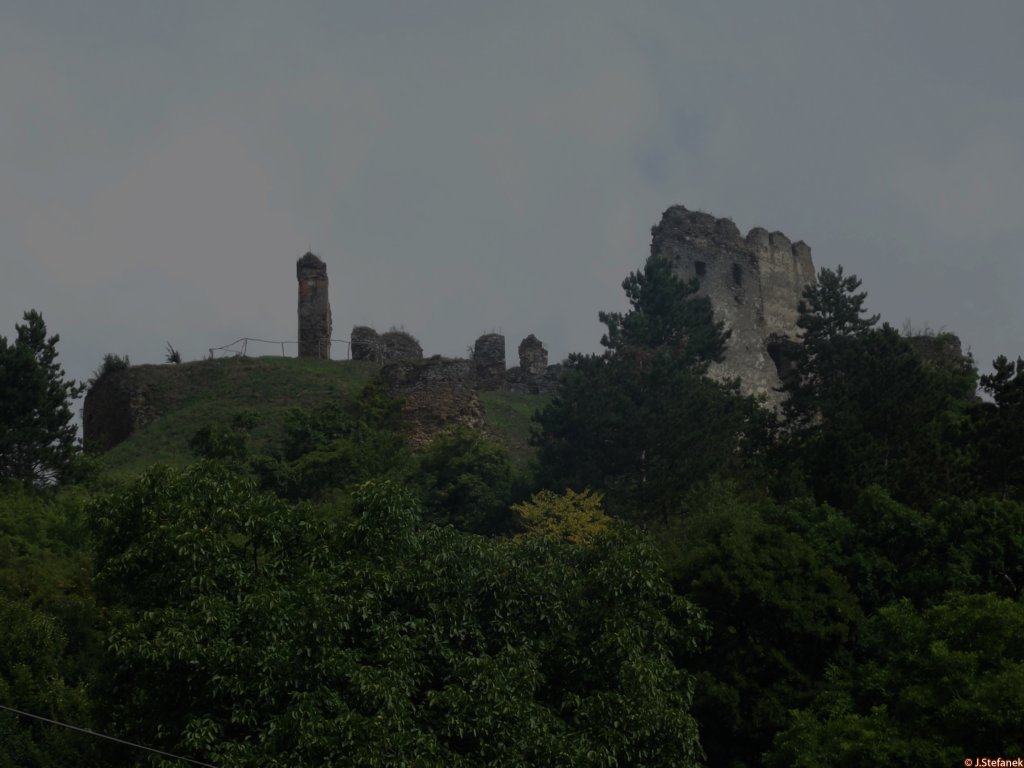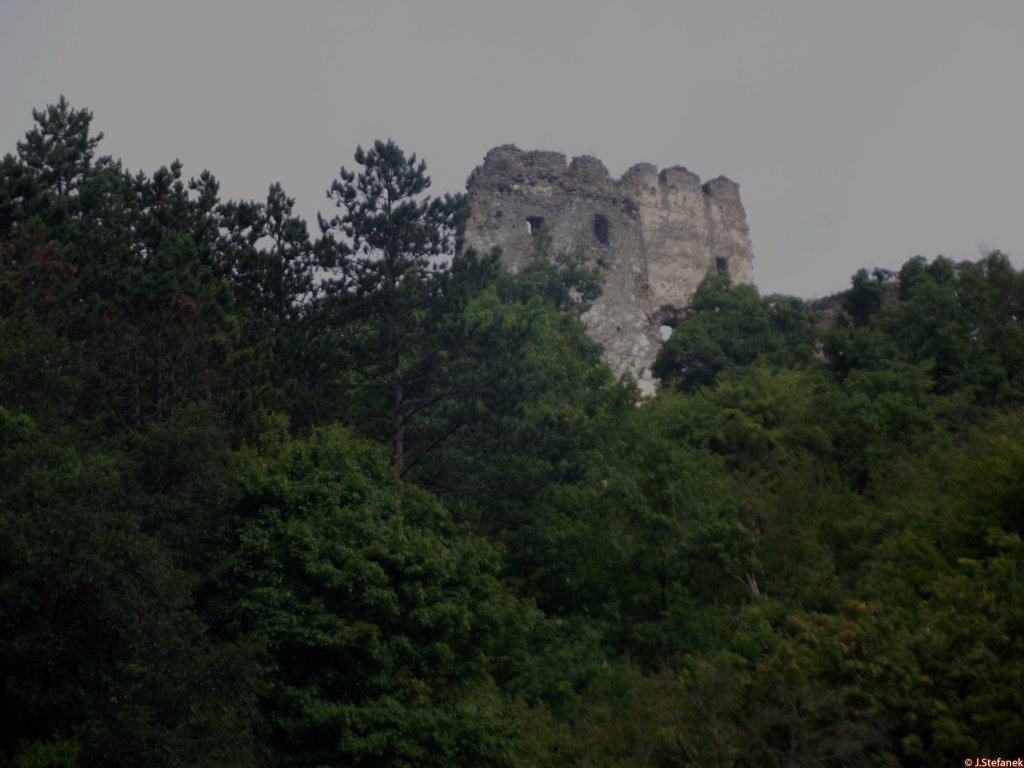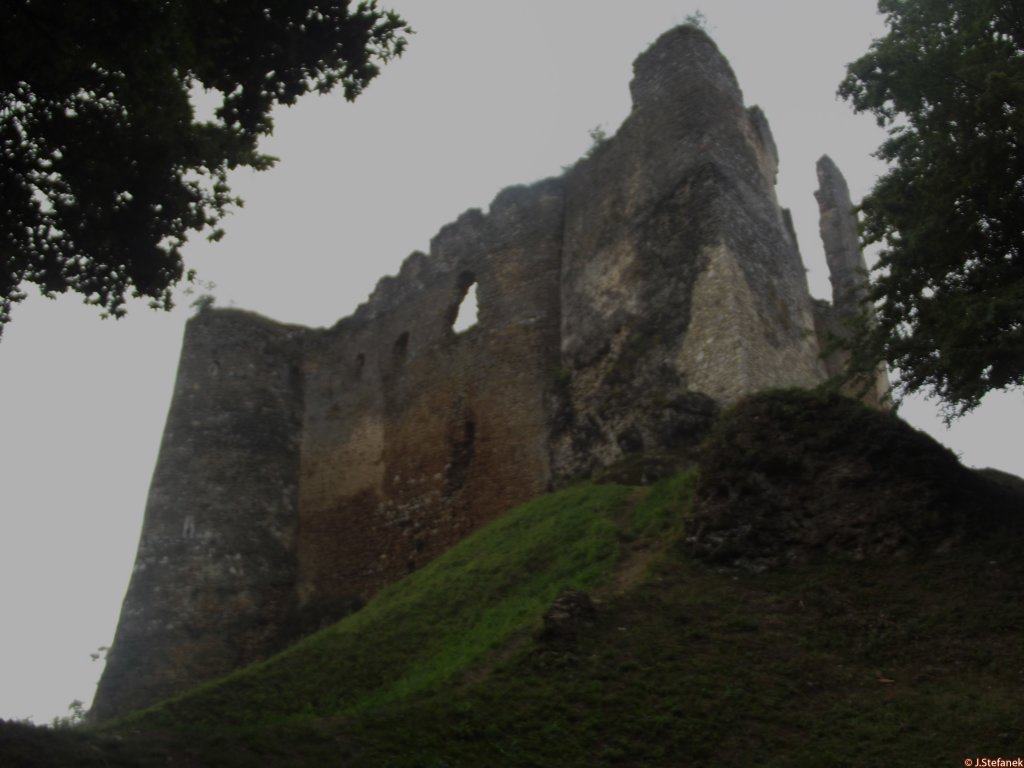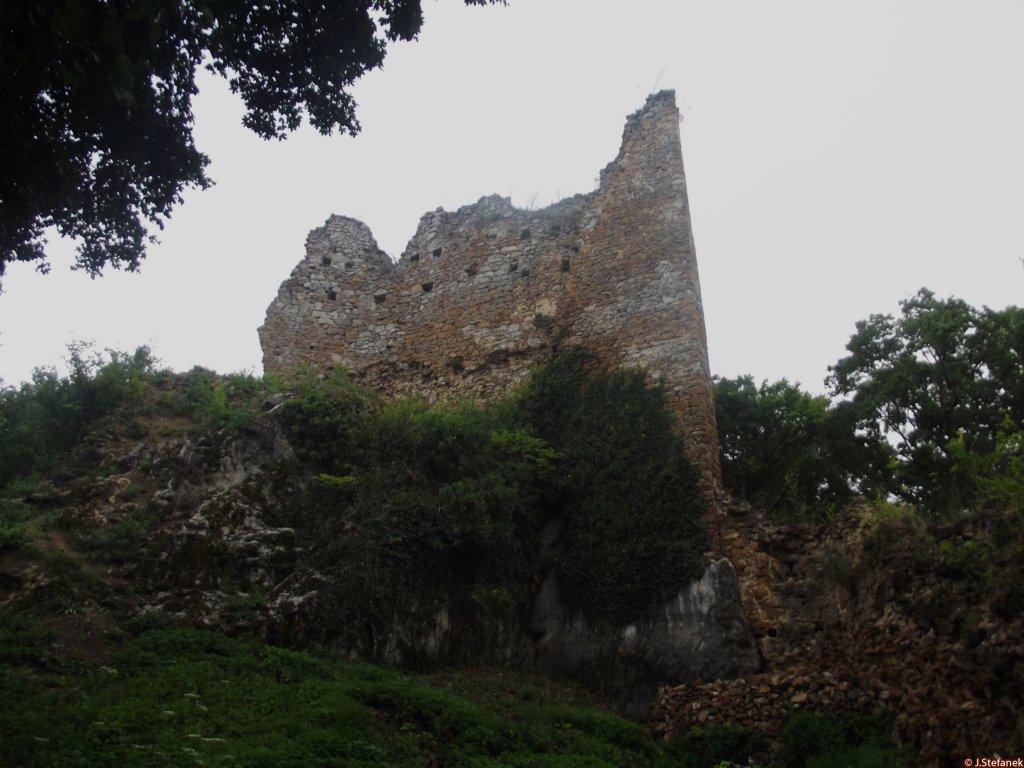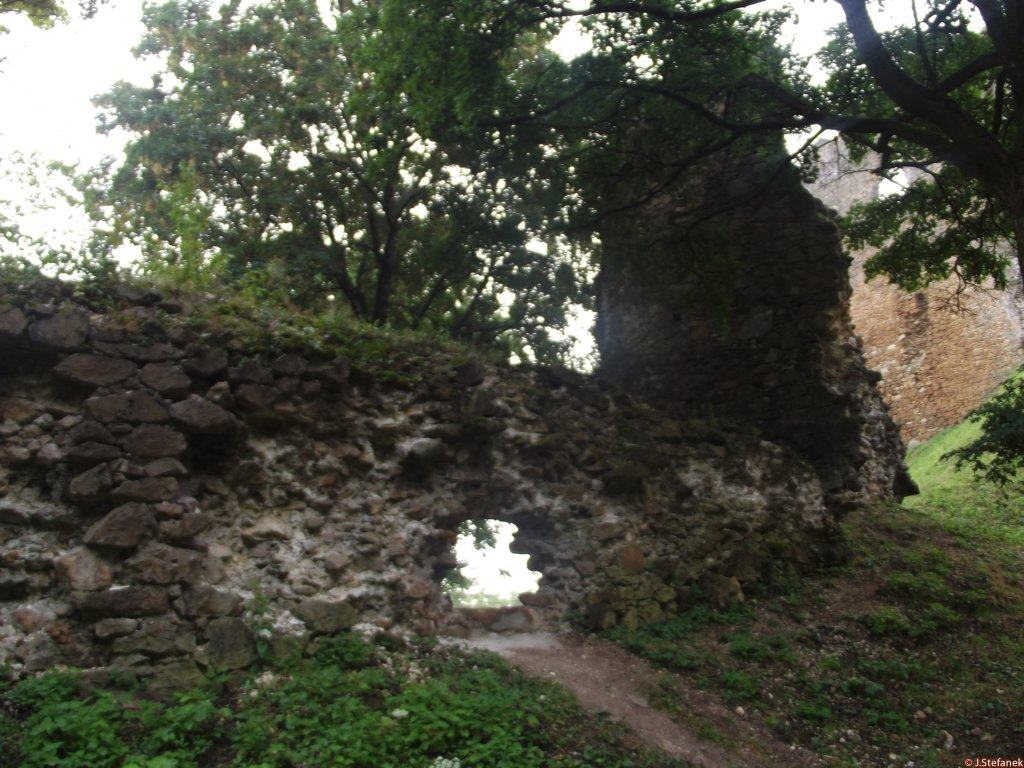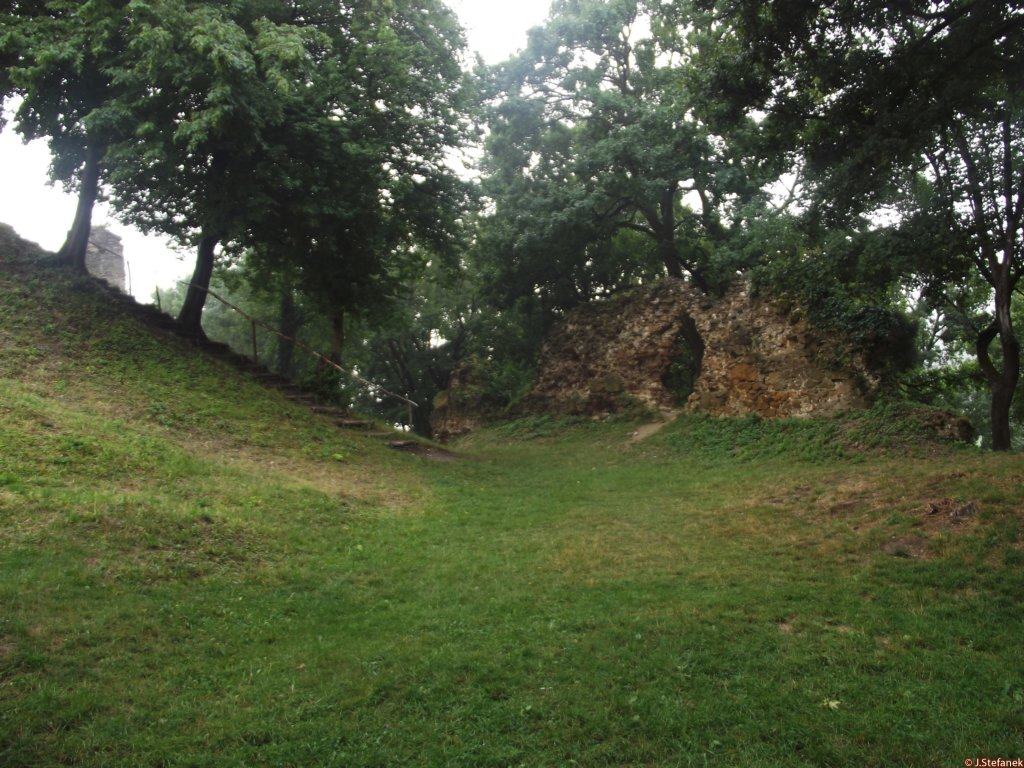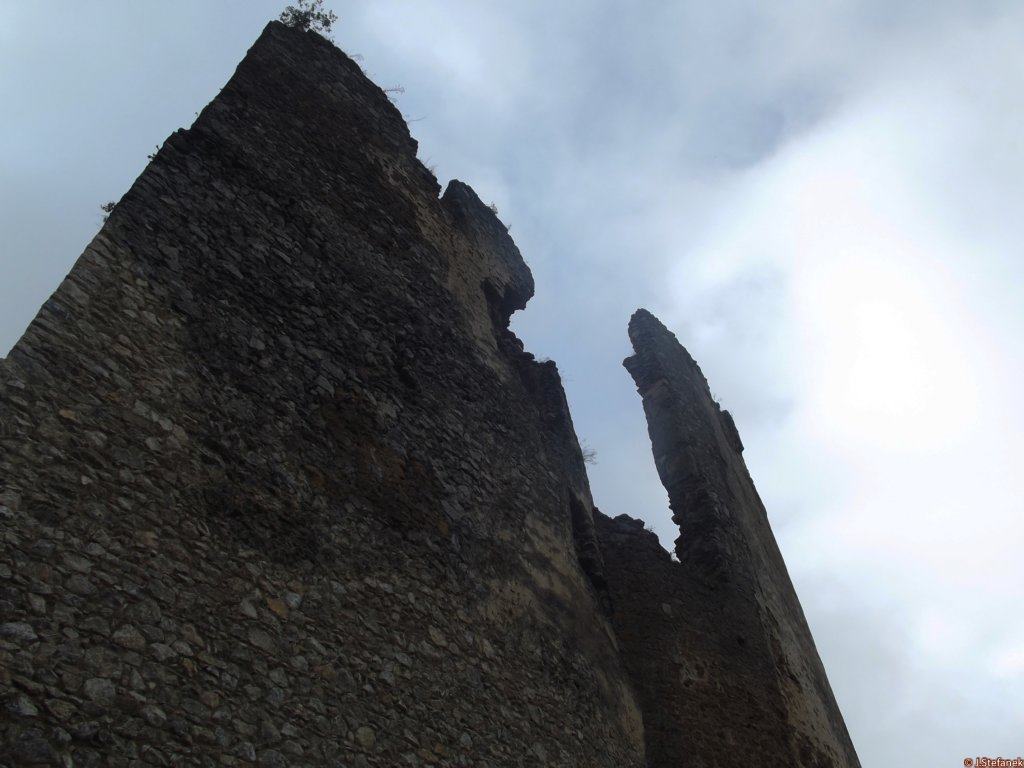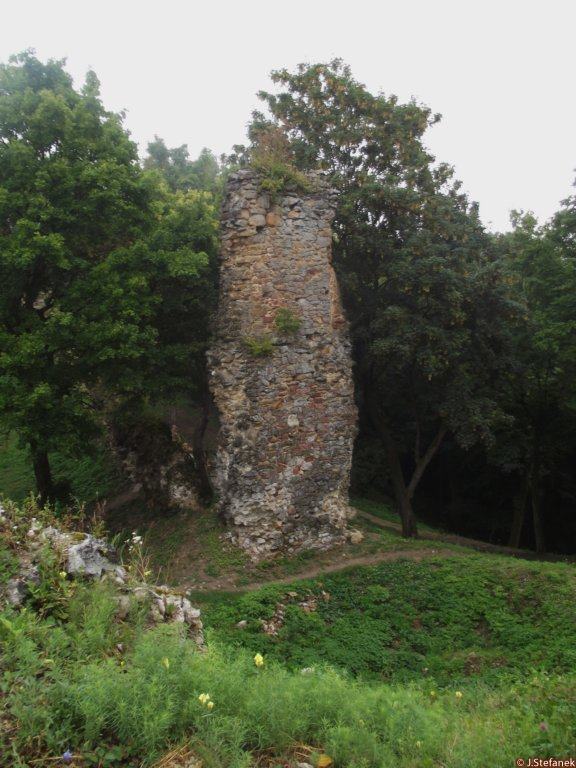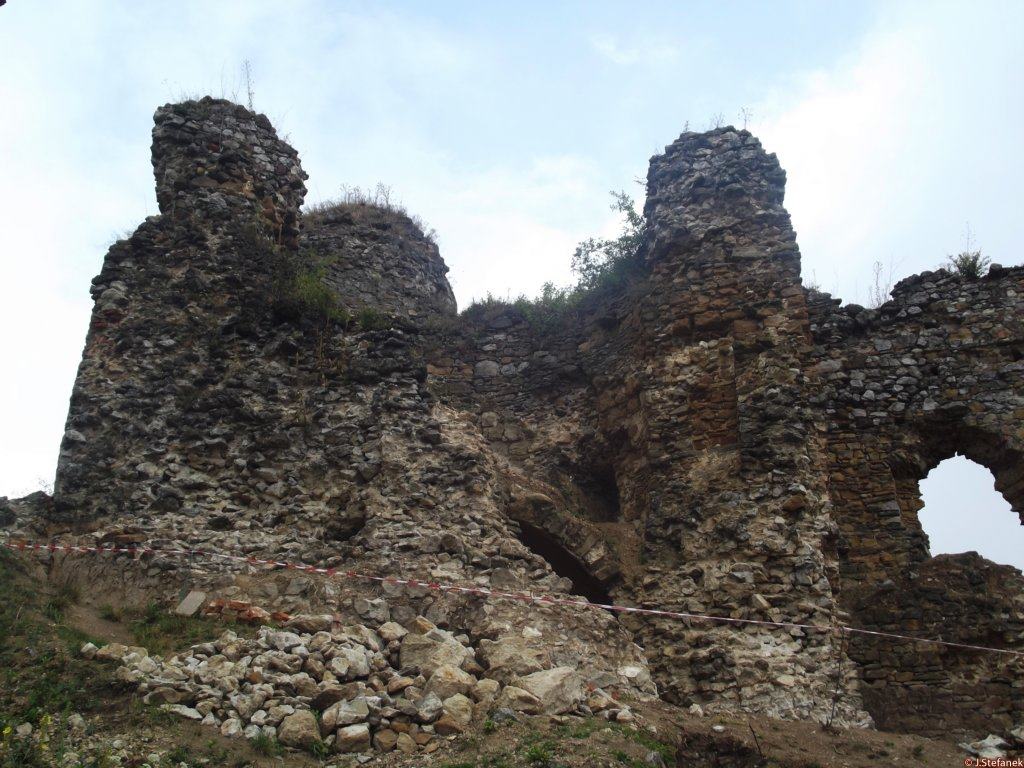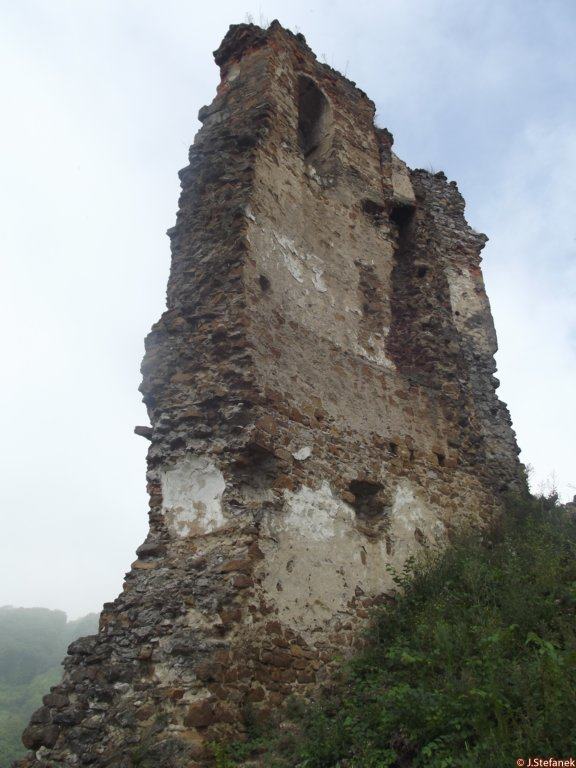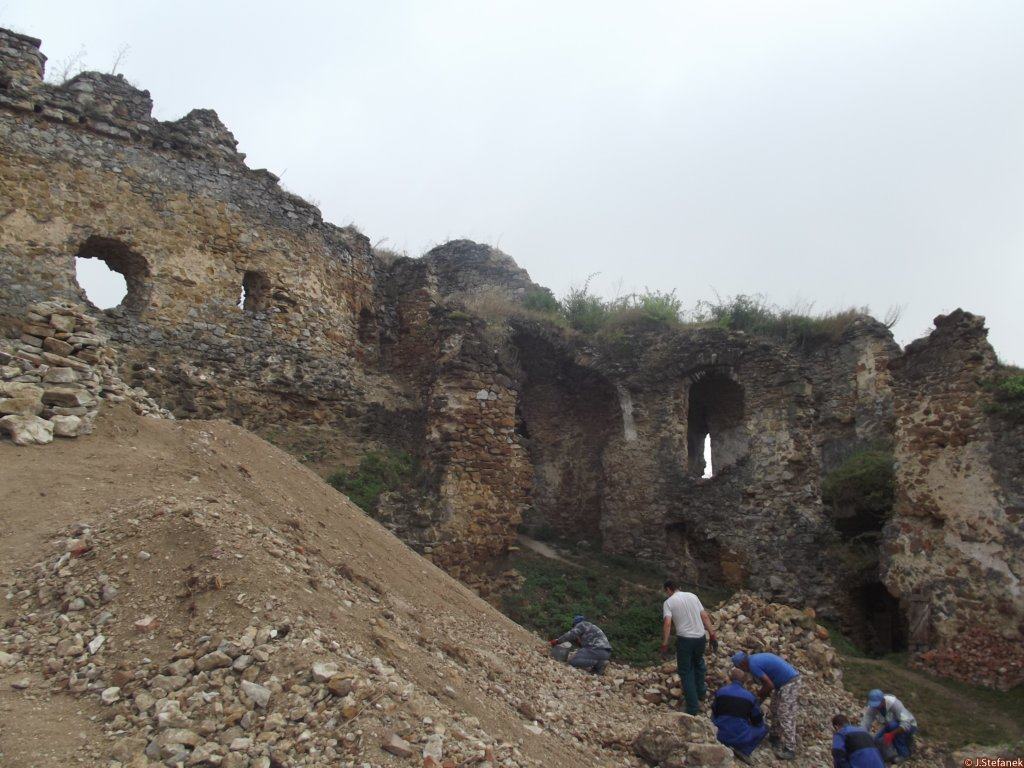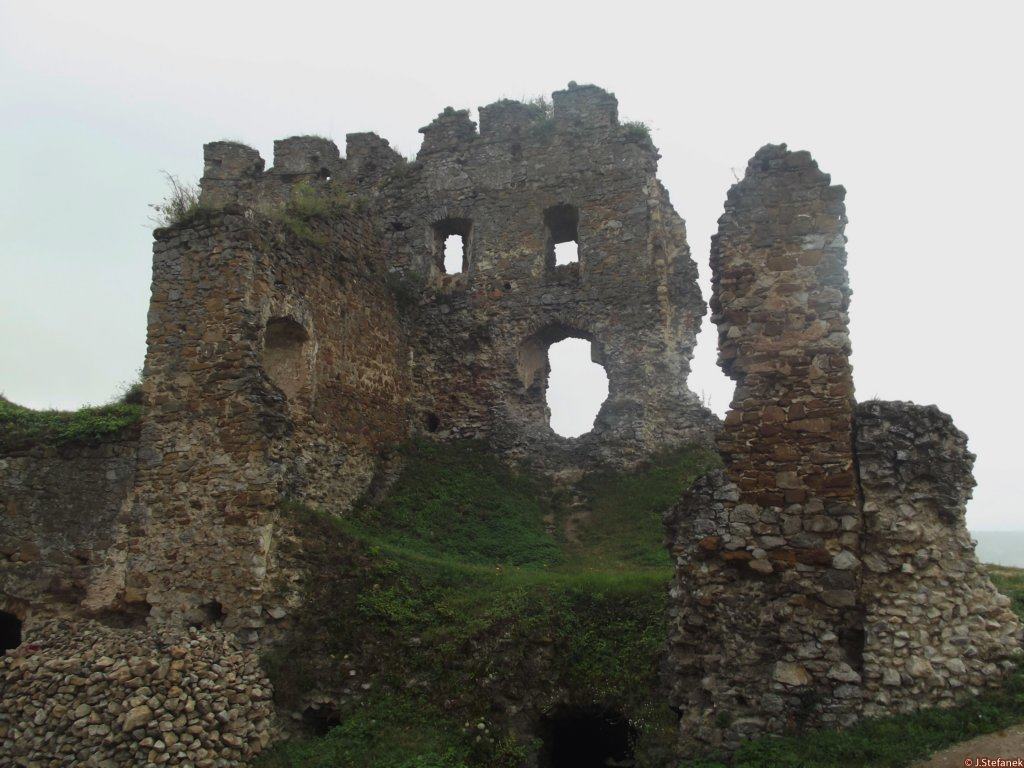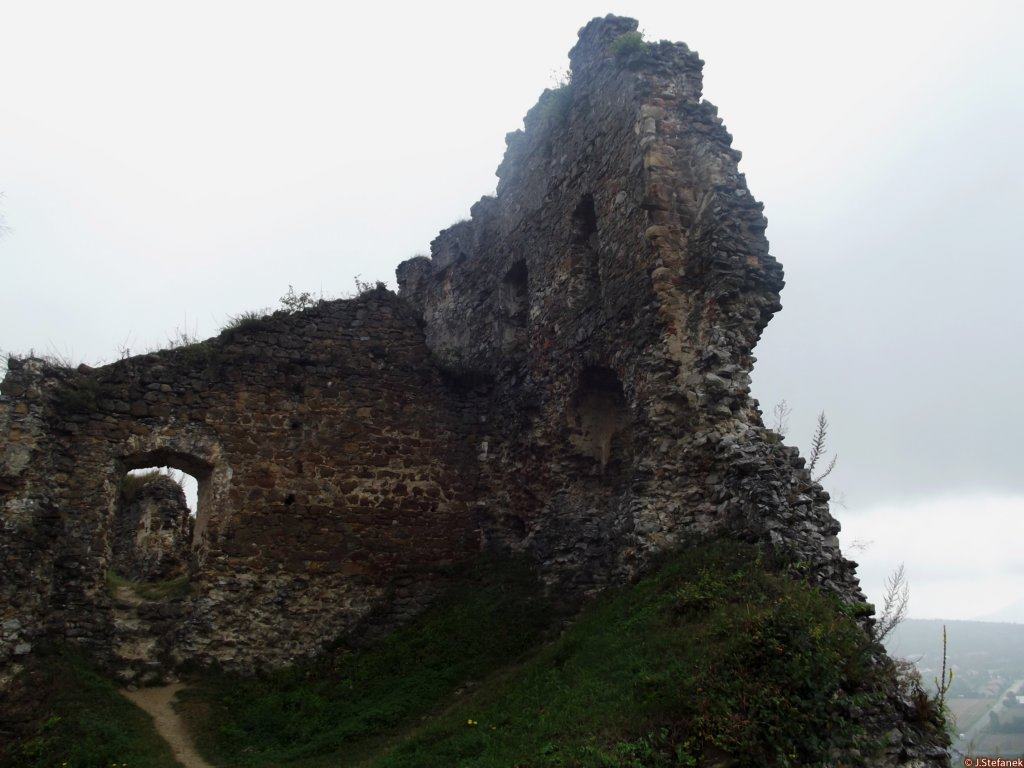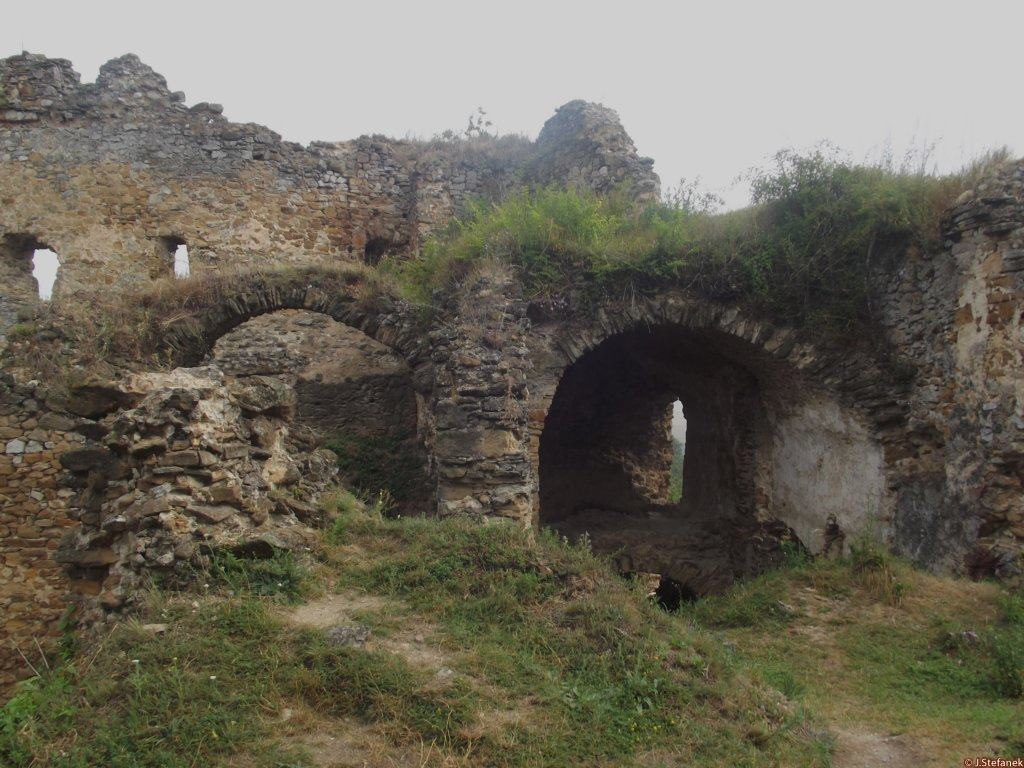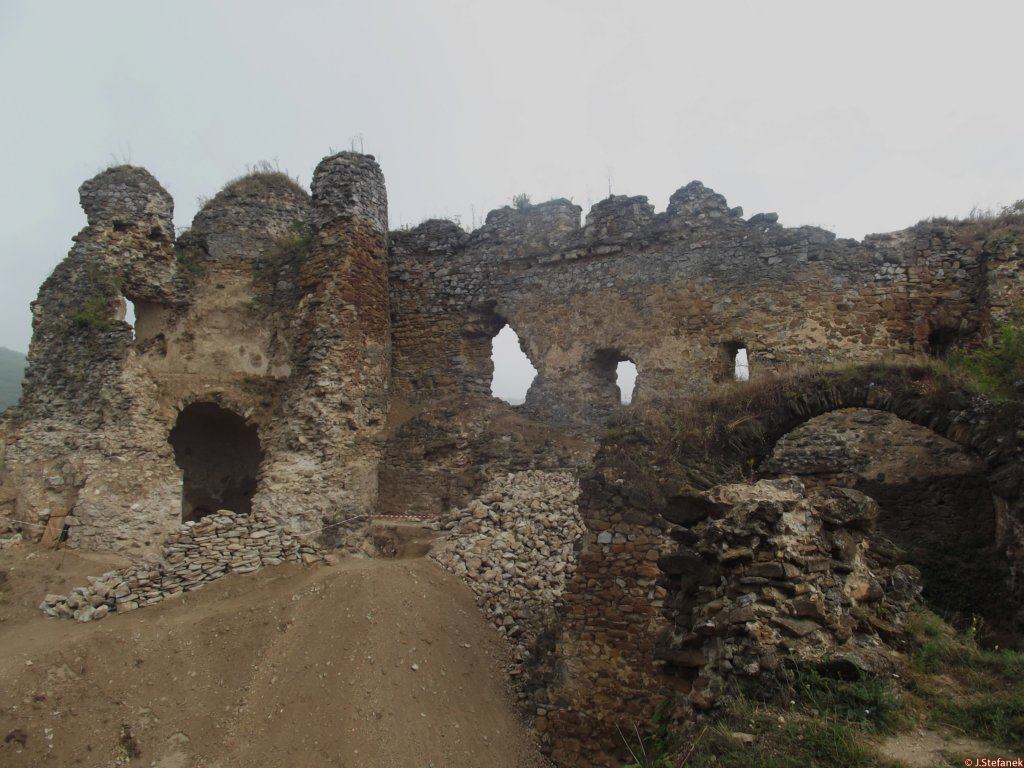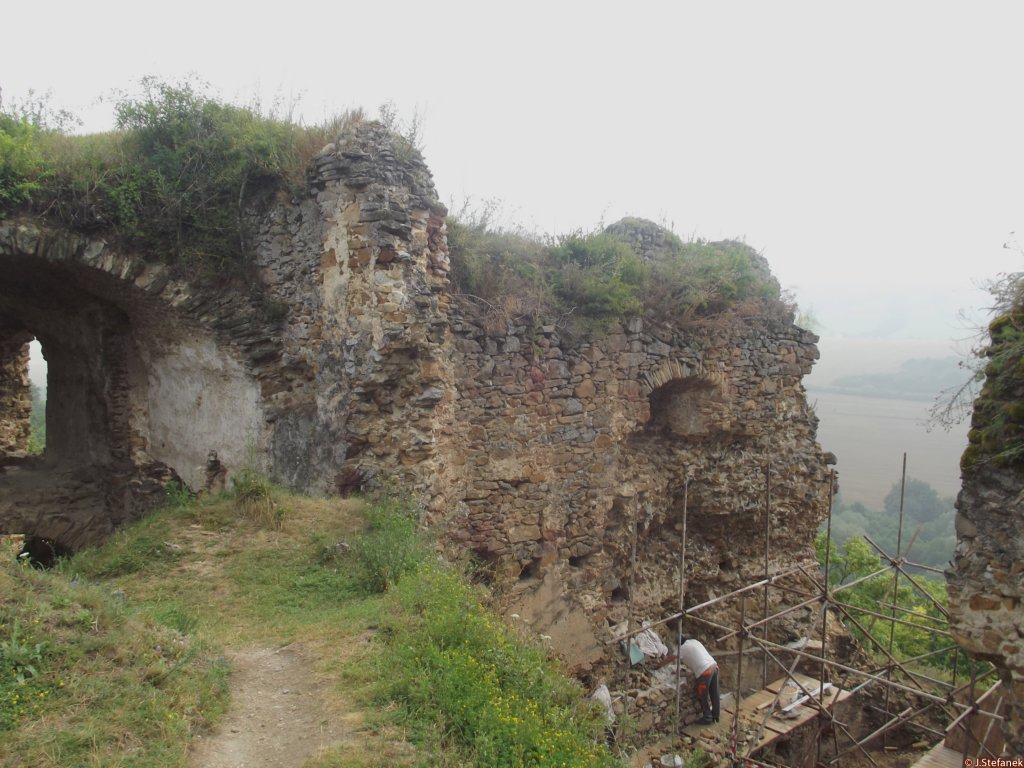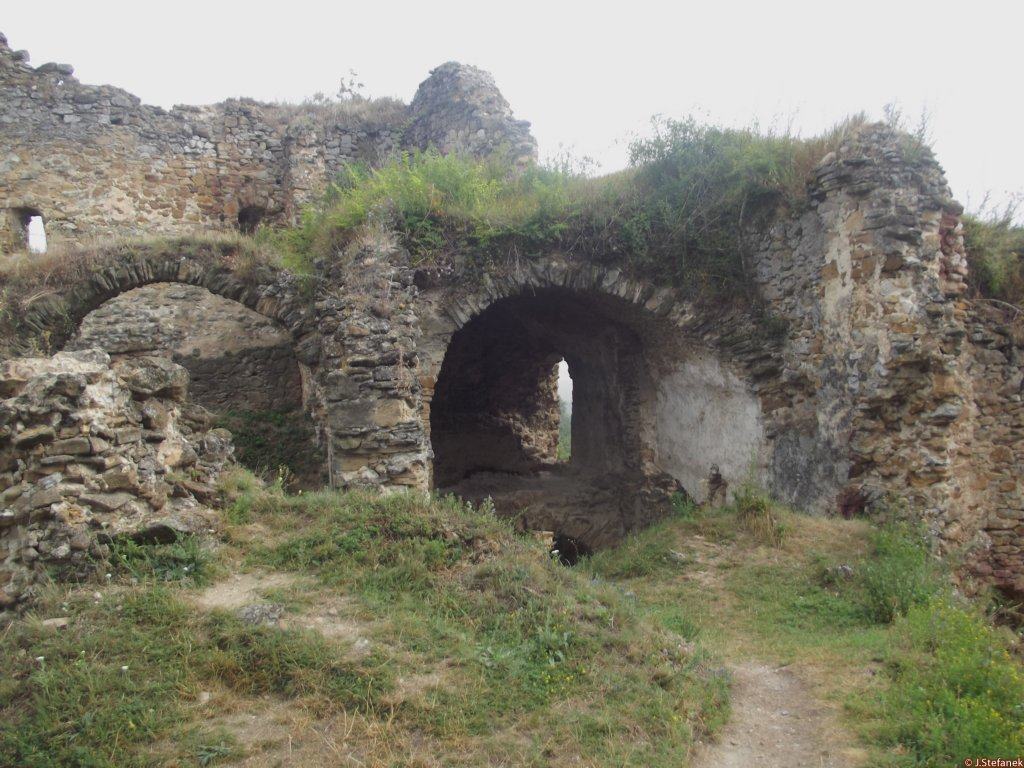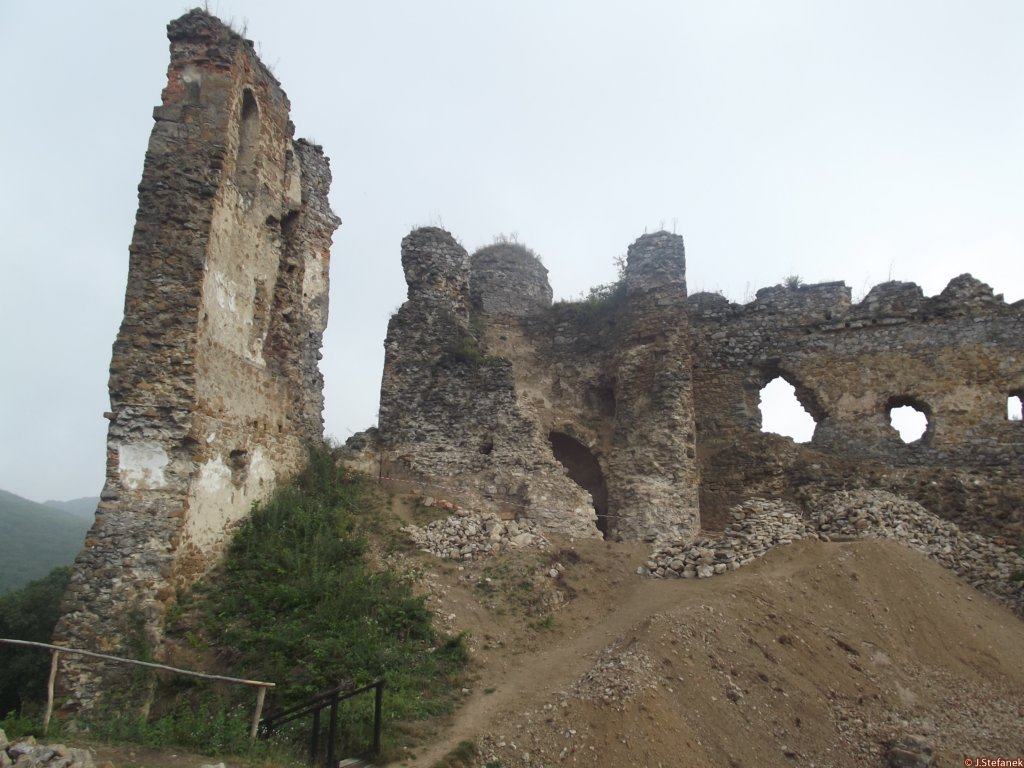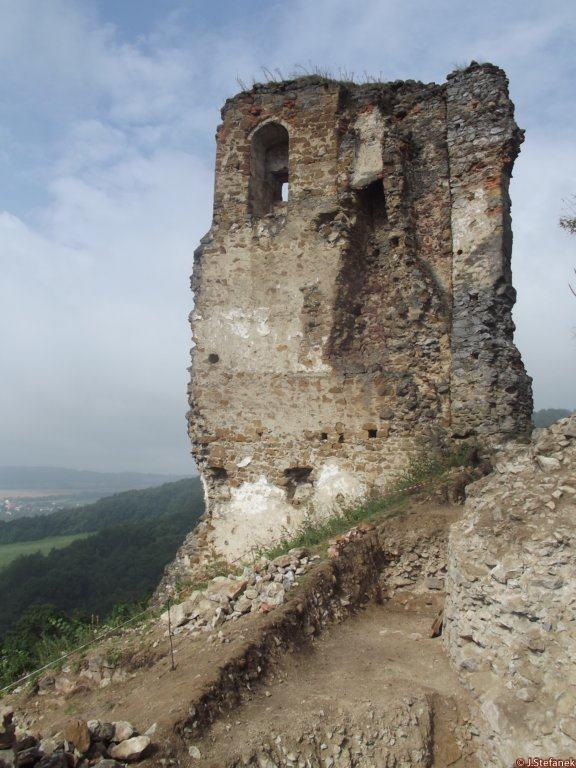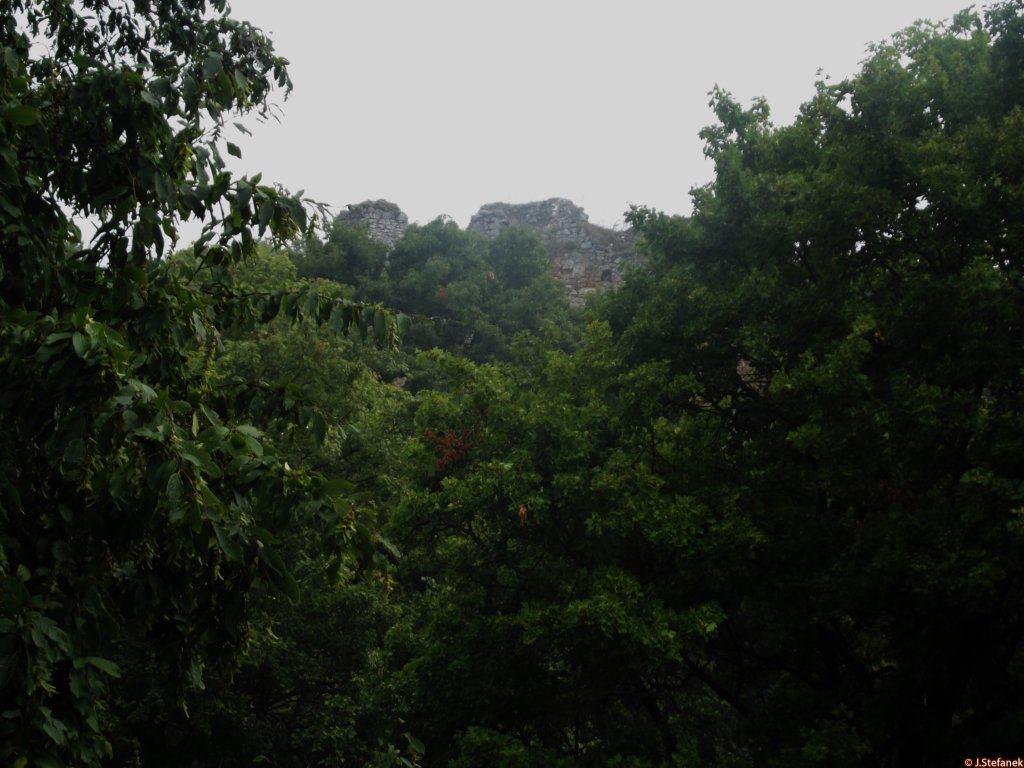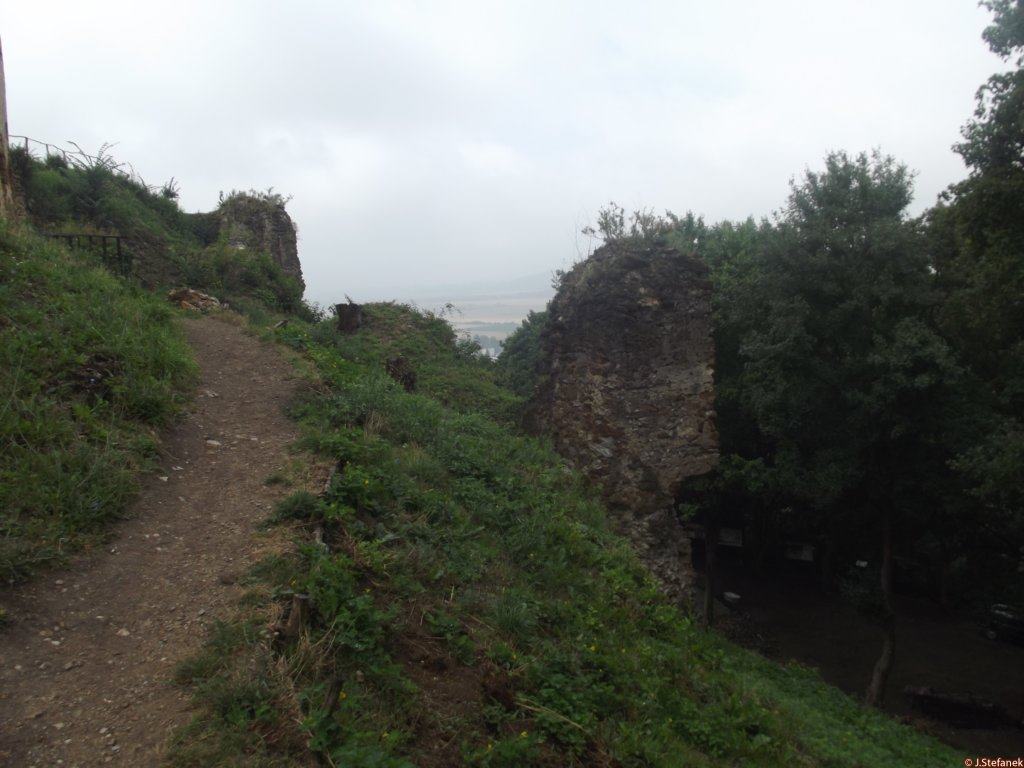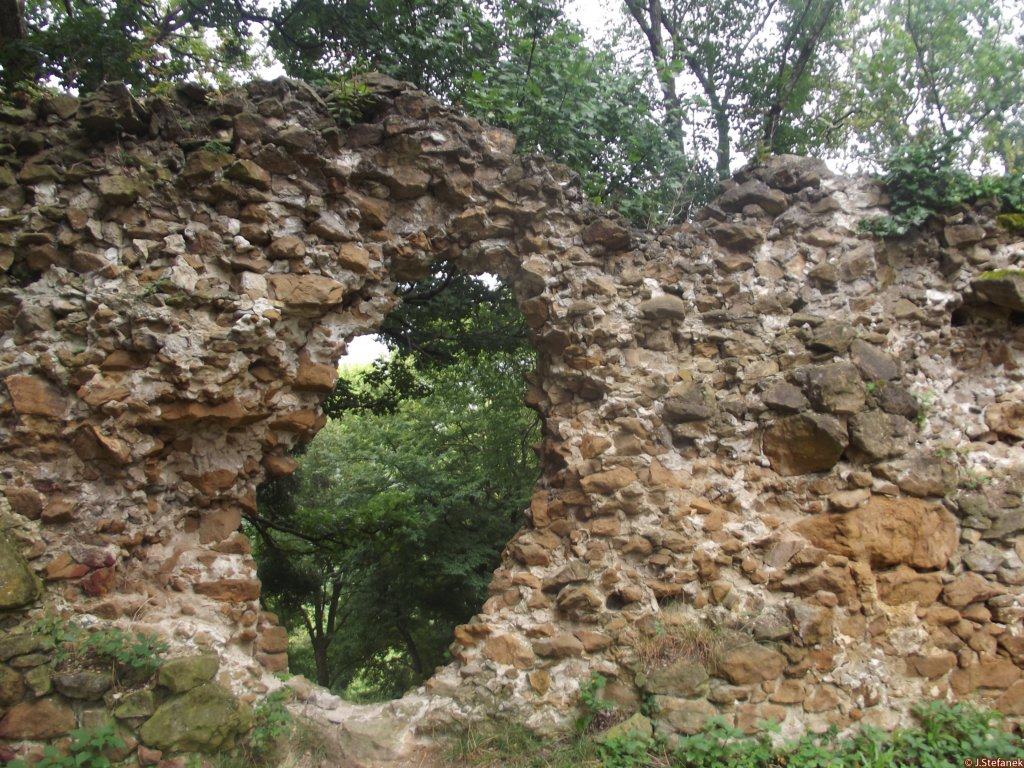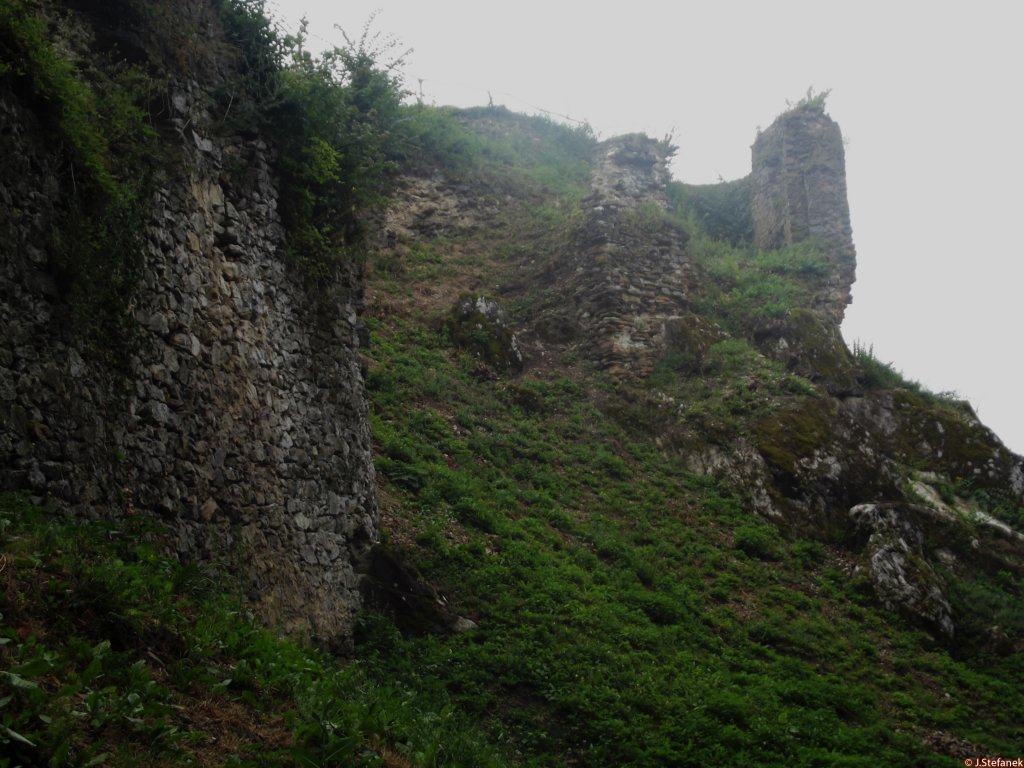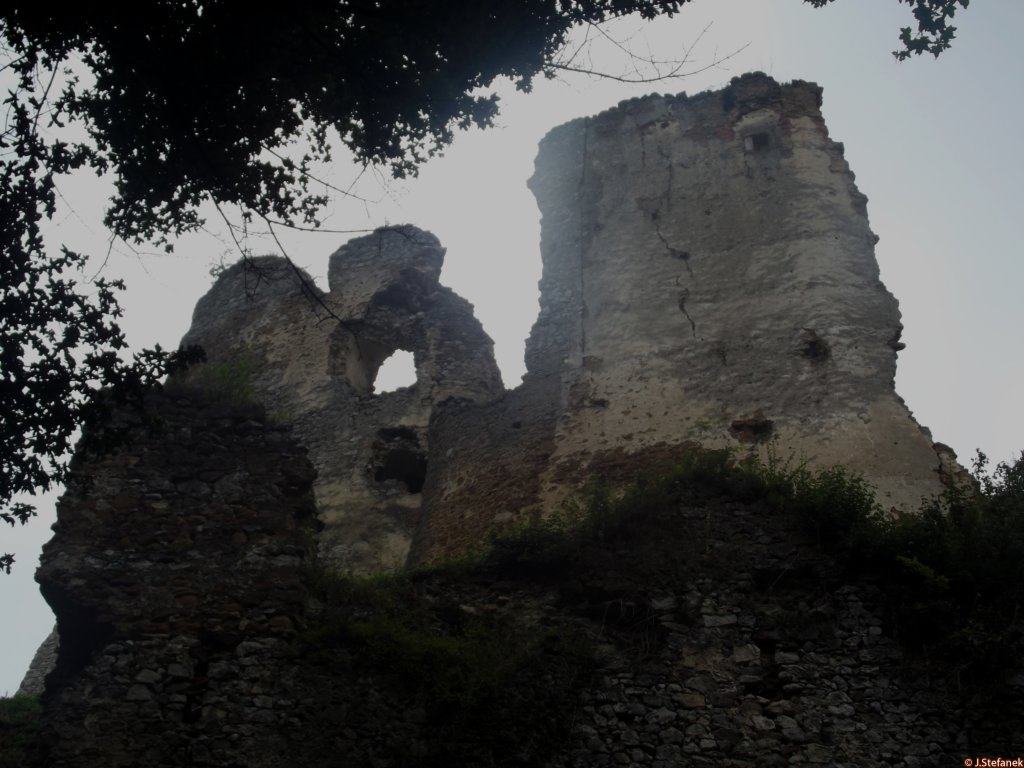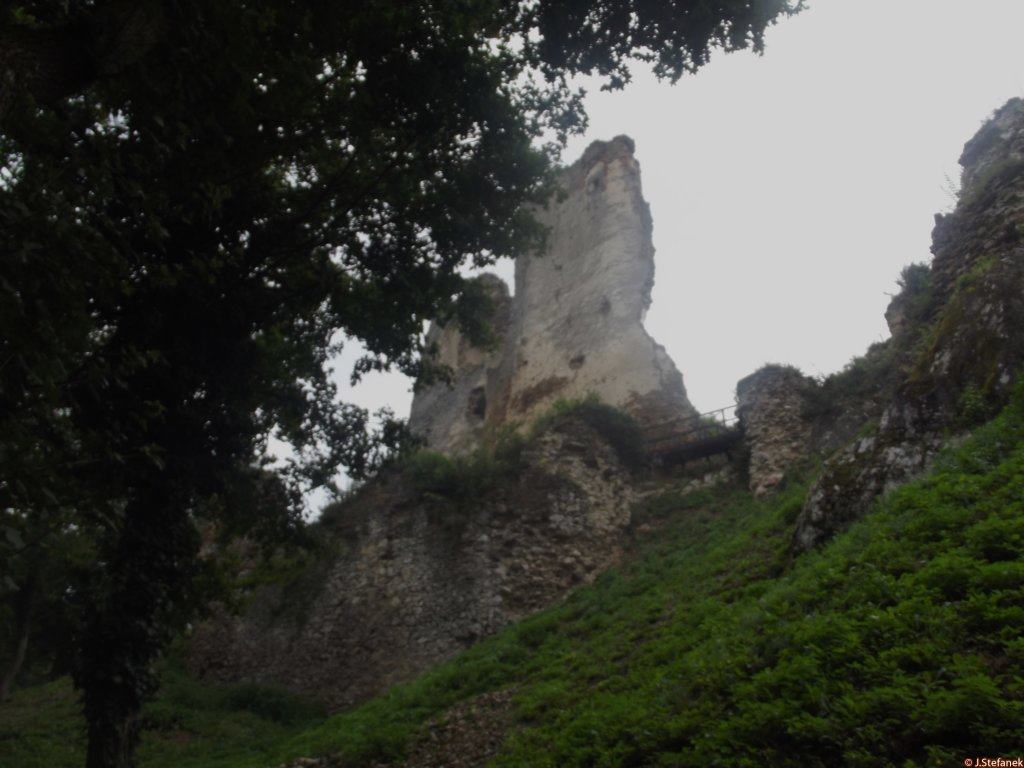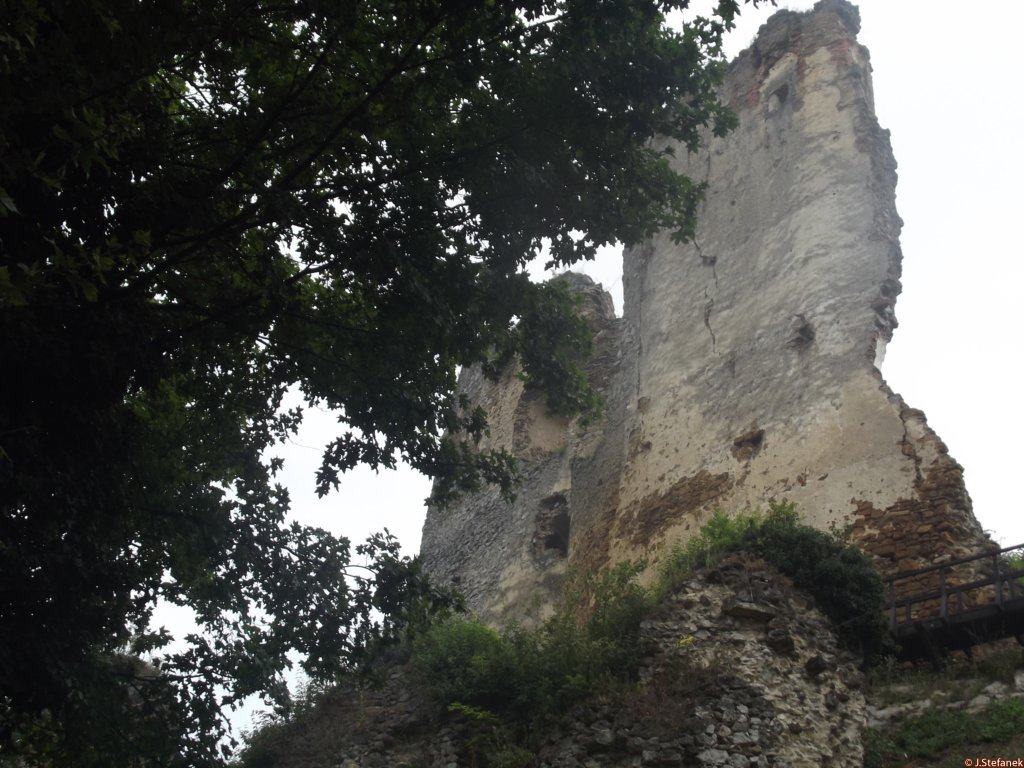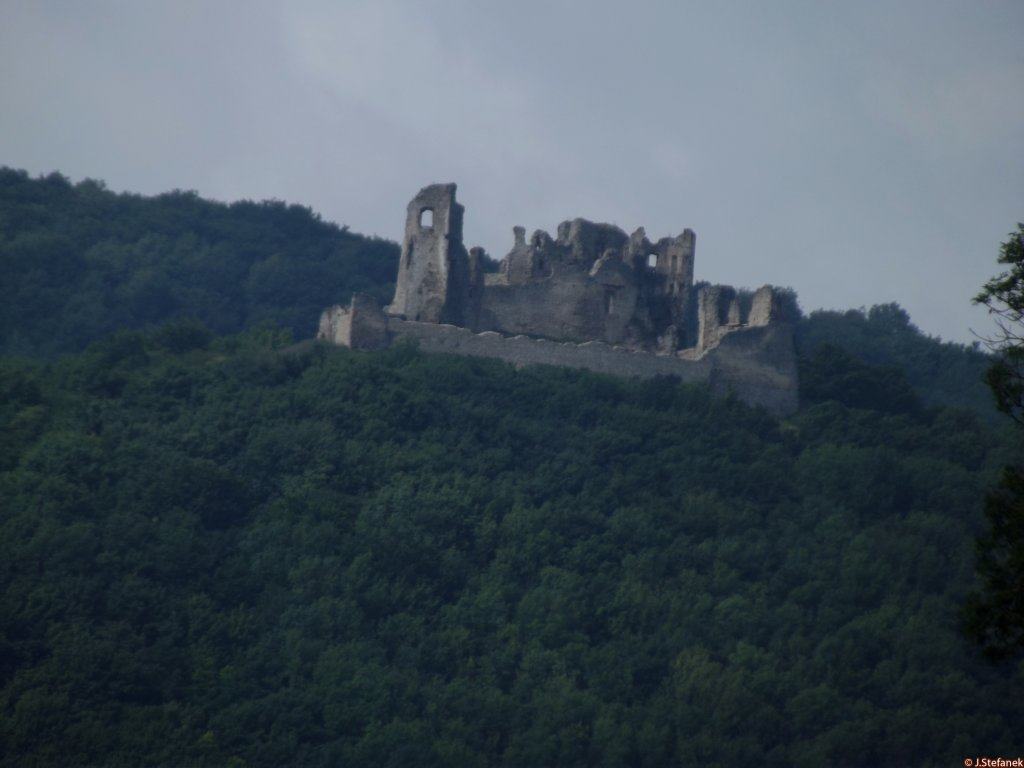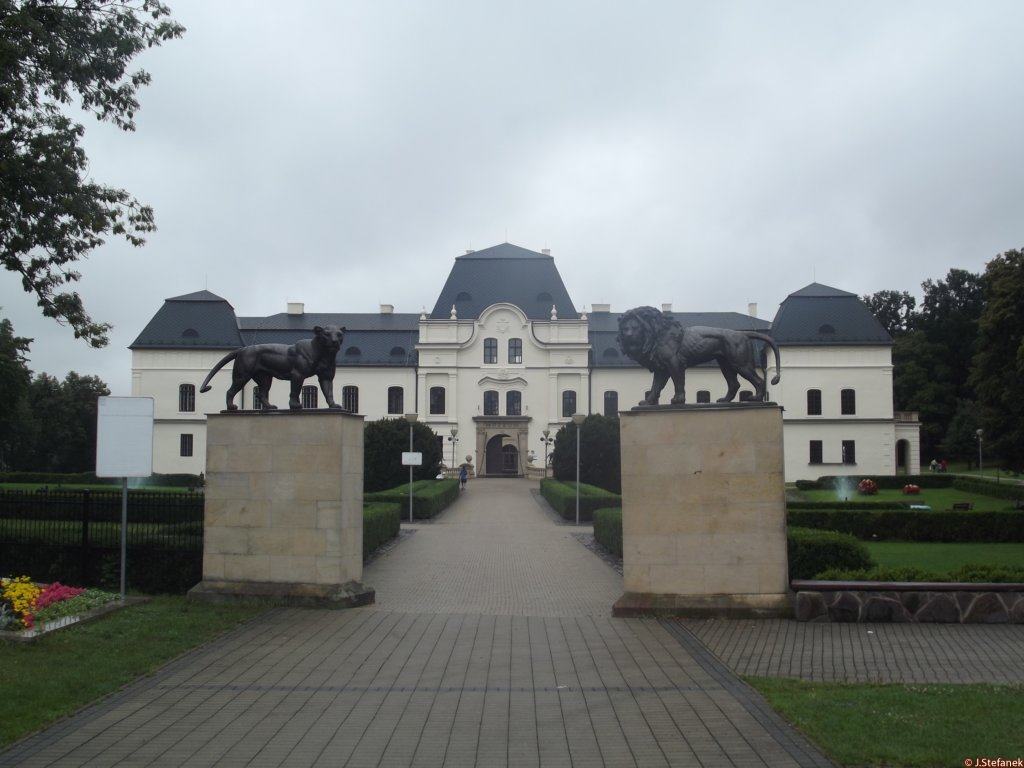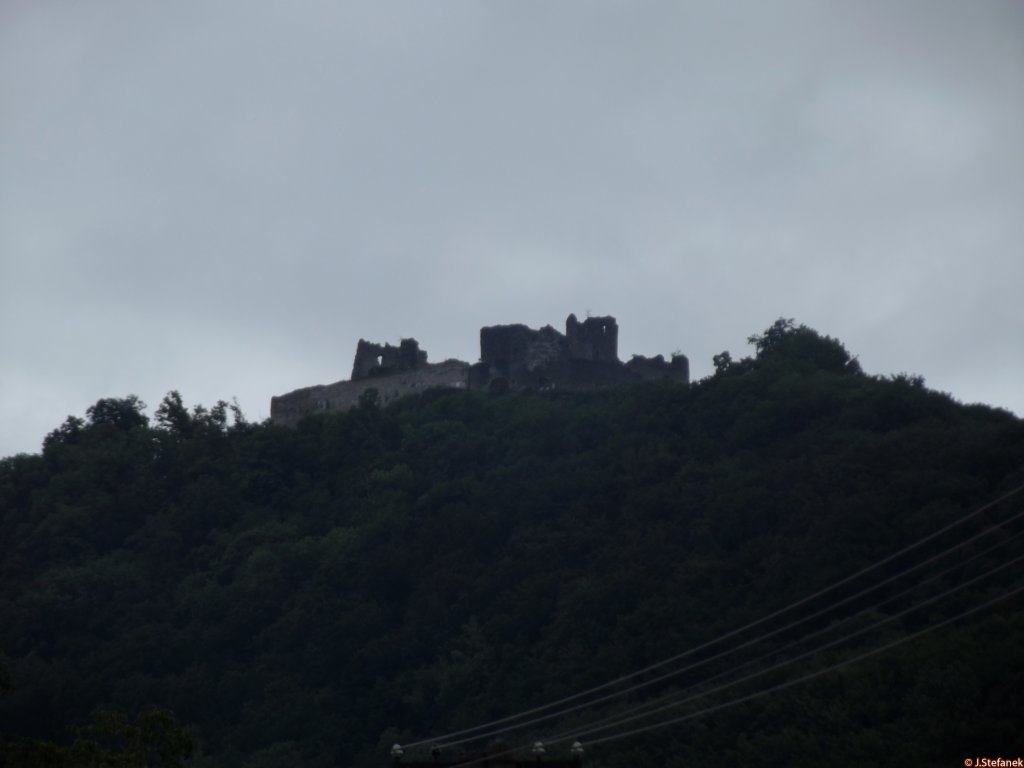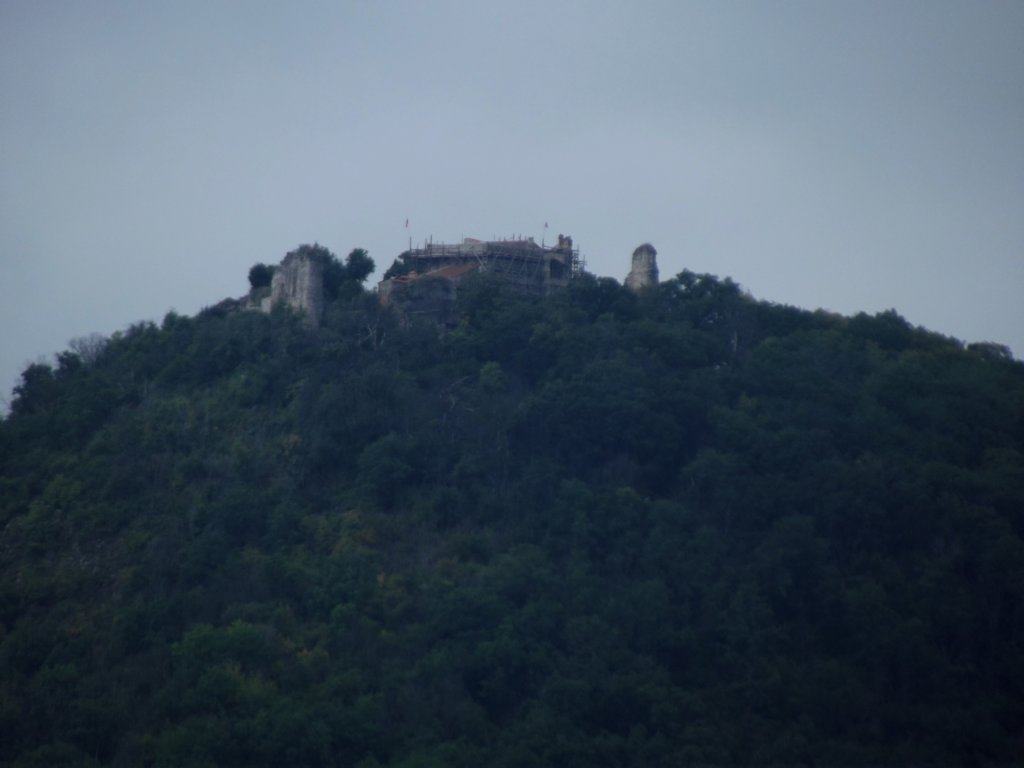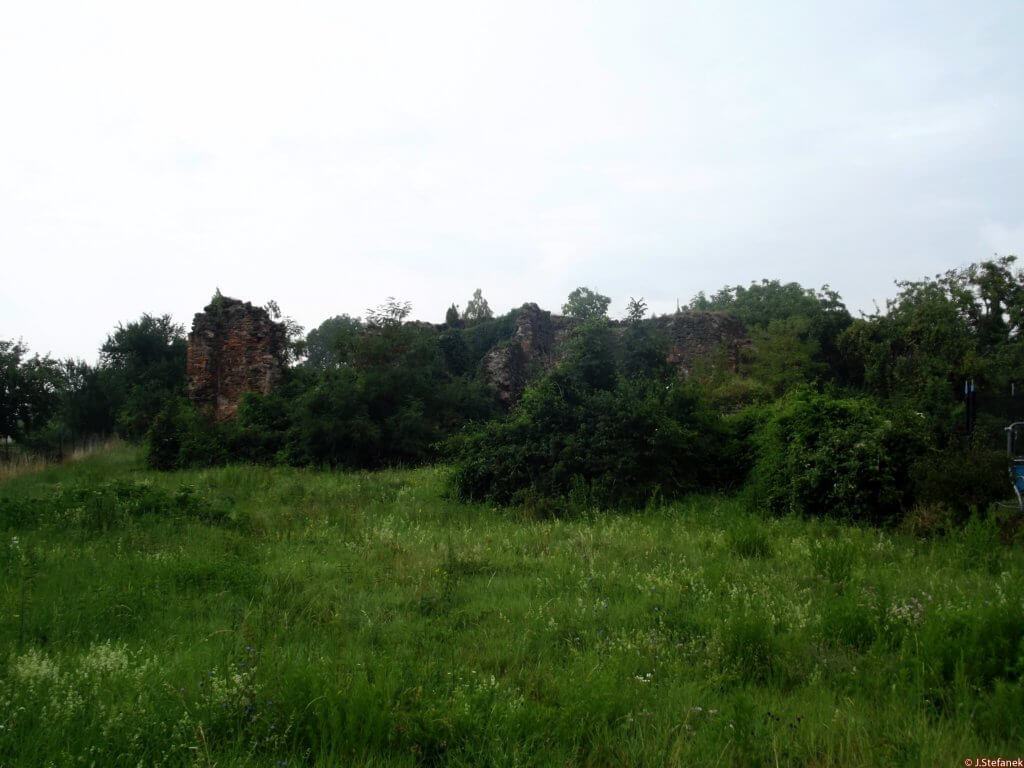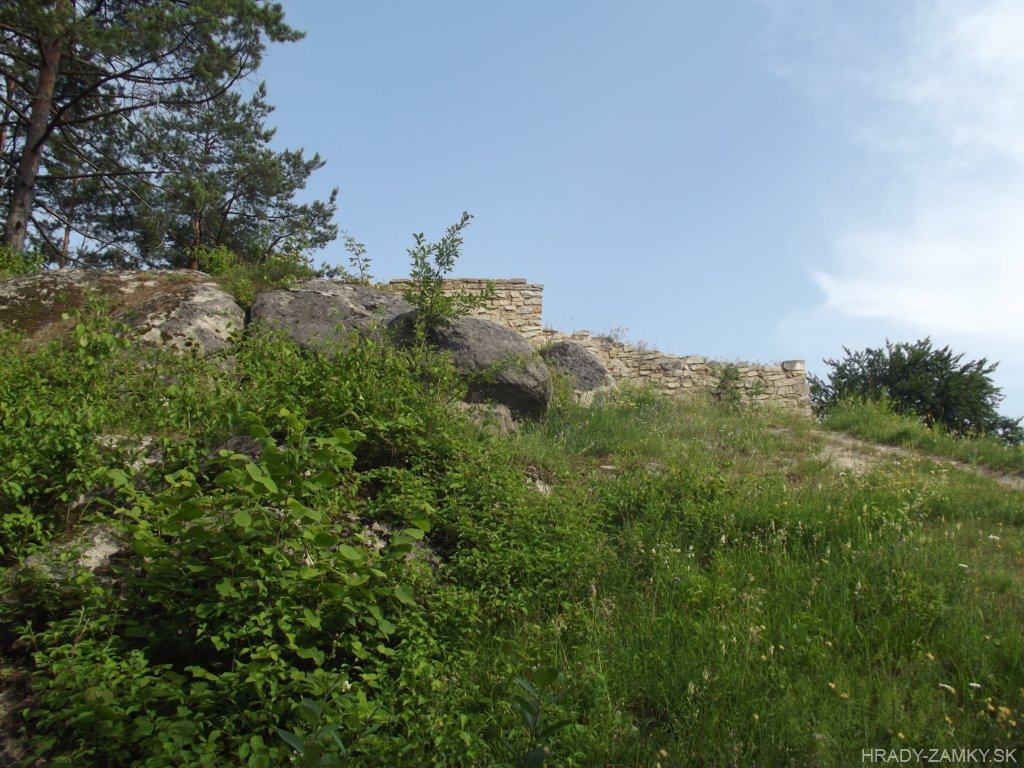Čičva (Čičava)
Sedliská Prešov county Slovakia
castle ruin
Čičva
Sedliská Prešovský kraj Slovakia
zrúcanina hradu
The ruins of a castle from the 13th century standing on the hill of the Beskydy foothills in the suburb of Mernícka pahorkatina, above the village of Sedliská - Podčičva
Zrúcanina hradu z 13. storočia stojaca na návrší Beskydského predhoria v podcelku Mernícka pahorkatina, nad obcou Sedliská – miestna časť Podčičva
Previous names
Chichva, Chichava, castrum Chychowa, Chychua, Čičava, Csicsva
Roads
Trasa 1: From the village of Sedliská, part of Podčičva, along the green route via the asphalt road directly opposite the bus stop at the main road to a temporary small-capacity car park, from where, alongside a wooden gazebo, the path turns right along a steeper forest road directly to the castle.
Trasa 1: Z obce Sedliská, časť Podčičva, po zelenej TZT, asfaltovou cestou priamo oproti zastávke autobusu pri hlavnej ceste až k provizórnemu malokapacitnému parkovisku, odkiaľ sa popri drevenom altánku cestička stáča doprava po strmšej lesnej ceste priamo až pod hrad.
Trasa 2: Access by a more demanding route next to the local cemetery and chapel, which begins right after the intersection of roads No. 15 and 558. In front of this intersection, there is a parking lot next to the road under the castle rampart, by the former quarry. The tombstones of the former owners of the castle can also be seen in the local cemetery.
Trasa 2: Prístup náročnejšou trasou popri miestnom cintoríne a kaplnke, ktorá začína hneď po križovatke ciest č.15 a 558. Pred touto križovatkou je vedľa cesty k dispozícii parkovisko pod hradným bralom, pri bývalom kameňolome. Na miestnom cintoríne je vidieť i náhrobné kamene bývalých majiteľov hradu.
Description
The core of the castle is an extended wedge of a corner with a circular tower. On the opposite side of the courtyard are the remains of the palace and the walls of the remains of probably farm and operational buildings. From the northeast, the core was protected by a bastion with a rounded end and from the east it is now a ruin of a massive bastion with cannons.The castle was additionally extended by an farm bailey, which was protected by a circular bastion and its front was closed by a fortress. From the outside, the system was protected by trenches and ramparts, which is still visible in the field to this day.
Jadro hradu tvorí vysunutý klin nárožia s kruhovou vežou. Na opačnej strane nádvoria sa nachádzajú pozostatky paláca a pri hradbách zvyšky pravdepodobne hospodárskych a prevádzkových budov. Zo severovýchodu jadro chránila bašta s oblým zakončením a z východu dnes už zrúcanina mohutnej bašty s delami.Hrad bol dodatočne rozšírený o hospodárske predhradie, ktoré chránila kruhová bašta a jeho čelo uzatvárala predsunutá pevnôstka. Z vonkajšej strany chránil predhradie systém priekop a valov, ktorý je dodnes viditeľný v teréne.
Plan

Legend to the ground plan
- 1 - upper castle
- 2 - round tower with wedge
- 3 - palaces
- 4 - cannon bastion
- 5 - bastion
- 6 - fort
- 7 - round bastion
- 8 - front bastion of the fort
Legenda k pôdorysu
- 1 - horný hrad
- 2 - kruhová veža s klinom
- 3 - paláce
- 4 - delová bašta
- 5 - bašta
- 6 - predhradie
- 7 - kruhová bašta
- 8 - čelná bašta predhradia
History
When in 1270, Stephen V. ascended the Hungarian throne and donated several estates, including the property of Čičva, to the nobleman Reynold, ancestor of the Rozgonyi family, for his faithful services and merits proved on the expeditions of the royal army. The castle was built between 1309 and 1316 and was probably built by Reynold's sons. The first written mention of the castle of the same name dates from 1316. It is a document by which Master Peter, probably Reynold's grandson, rewarded Mikuláš Peres, a castellan at Čičva Castle, with the property of Tuzsér for the successful defense of the castle. Apparently, it was a repulse of the attack of Petr Petény, a Zemplín participant in the uprising against the king, in which the castellan Nicholas lost his left hand and his brother Štefan and three other members of the castle garrison lost their lives.
The Rozgonyi family died out in 1523 With Štefan's sword and the castle, with the consent of the king, he acquired the husband of Štefan's daughter Katarína, the mayor of Satumar, and Andrej Báthory, a banana from Belgrade. In 1527, however, Ján Zápoľský conquered and set it on fire. However, the Báthory family repaired and renovated the castle again.
In 1575, František Nádašdy's wedding to Alžbeta Báthora took place in nearby Vranov nad Topľou. Čičva Castle was also a part of the bride's vein. In 1610, Elizabeth's daughter Katarína, who married Juraj III, got him into the vein. Drugetha from Humenné. This put the castle in the hands of the Drugeths, who contributed to its greatest expansion. Under the Drugeth family, the archive of the Zemplín capital was also stored here. In the 1760s, Jurajov's great-grandson Sigismund inherited the castle. When the anti-Habsburg uprising broke out, he opposed the uprising, but in 1684 the castle was still conquered by Thököly's troops. In 1704, the troops of Francis II seized it. Rákóczi. They repaired the damaged parts and secured the castle. It was in the hands of the insurgents until 1711, when Commander Count František Barkóczy joined the side of the imperial troops and gave them a castle, which was demolished by Imperial General Laucken.
Since then, the castle is in ruins. Since 2014, the castle has been taken care of by the civic association PRO FUTURO of Čičva Castle.
Keď v r. 1270 zasadol na uhorský trón Štefan V., daroval šľachticovi Reynoldovi, predkovi rodu Rozgonyiovcov, za jeho verné služby a zásluhy preukázané na výpravách kráľovského vojska, viaceré majetky vrátane majetku Čičva. Hrad bol postavený v rokoch 1309 - 1316 a pravdepodobne ho postavili Reynoldovi synovia. Prvá písomná zmienka o hrade rovnakého mena pochádza z roku 1316. Jedná sa o listinu, ktorou magister Peter, pravdepodobne Reynoldov vnuk, odmenil Mikuláša Peresa, kastelána na hrade Čičva, majetkom Tuzsér za úspešnú obranu hradu. Podľa všetkého išlo o odrazenie útoku Petra Peténya, zemplínskeho účastníka povstania proti kráľovi, pri ktorom kastelán Mikuláš stratil ľavú ruku a jeho brat Štefan i traja ďalší členovia hradnej posádky prišli o život.
Rod Rozgonyiovcov vymrel v r. 1523 Štefanom po meči a hrad so súhlasom kráľa získal manžel Štefanovej dcéry Kataríny, satumarský župan a belehradský bán Andrej Báthory. V roku 1527 ho však Ján Zápoľský dobyl a podpálil. Báthoryovci však hrad znovu opravili a zrenovovali.
V roku 1575 sa v neďalekom Vranove nad Topľou konala svadba Františka Nádašdyho s Alžbetou Báthory. Súčasťou nevestinho vena bol aj hrad Čičva. V roku 1610 ho do vena dostala Alžbetina dcéra Katarína, ktorá sa vydala za Juraja III. Drugetha z Humenného. Týmto sa dostal hrad do rúk Drugethovcov, ktorí sa zaslúžili o jeho najväčší rozmach. Za Drugethovcov tu bol uložený aj archív Zemplínskej stolice. V 60. rokoch 17. storočia zdedil hrad Jurajov pravnuk Žigmund. Keď vypuklo protihabsburské povstanie, postavil sa proti vzbure, no v roku 1684 hrad napriek tomu dobyli Thökölyho vojská. V roku 1704 sa ho zmocnili vojská Františka II. Rákócziho. Poškodené časti opravili a hrad zabezpečili. V rukách povstalcov bol až do roku 1711, kedy sa veliteľ gróf František Barkóczy pridal na stranu cisárskych vojsk a vydal im hrad, ktorý dal cisársky generál Laucken zbúrať.
Odvtedy je hrad v ruinách. Od r.2014 sa o hrad stará občianske združenie PRO FUTURO hradu Čičva.
Myths and legends
Book of lies
In the 16th and 17th centuries, the castle housed the so-called A book of lies and liars, which was known throughout Slovakia as the "Čičavská kniha". Along with the names of liars, all possible and impossible lies and untruths were written into it. The remnant of this book is said to be the annual scare at the castle now. All the liars and liars who got into the book come together for a meeting. According to this book, a well-known Slovak wording also arose: This too should be recorded in the Čičava book.
Kniha lží a klamstiev
V 16. a 17. storočí sa v hrade nachádzala tzv. Kniha lží a luhárov, ktorá bola známa na celom Slovensku ako „Čičavská kniha“. Spolu s menami luhárov sa do nej zapisovali všetky možné i nemožné klamstvá a nepravdy. Pozostatkom tejto knihy je vraj teraz každonočné strašenie na hrade. To sa schádzajú na posiedku všetci klamári a luhári, ktorí sa do knihy dostali. Podľa tejto knihy vznikol aj známy slovenský zvrat: Aj toto by sa malo zapísať do Čičavskej knihy.
Useful information
The ruin is freely accessible. The castle is undergoing reconstruction.
Zrúcanina je voľne prístupná. Na hrade prebieha rekonštrukcia.
Nearby castles
